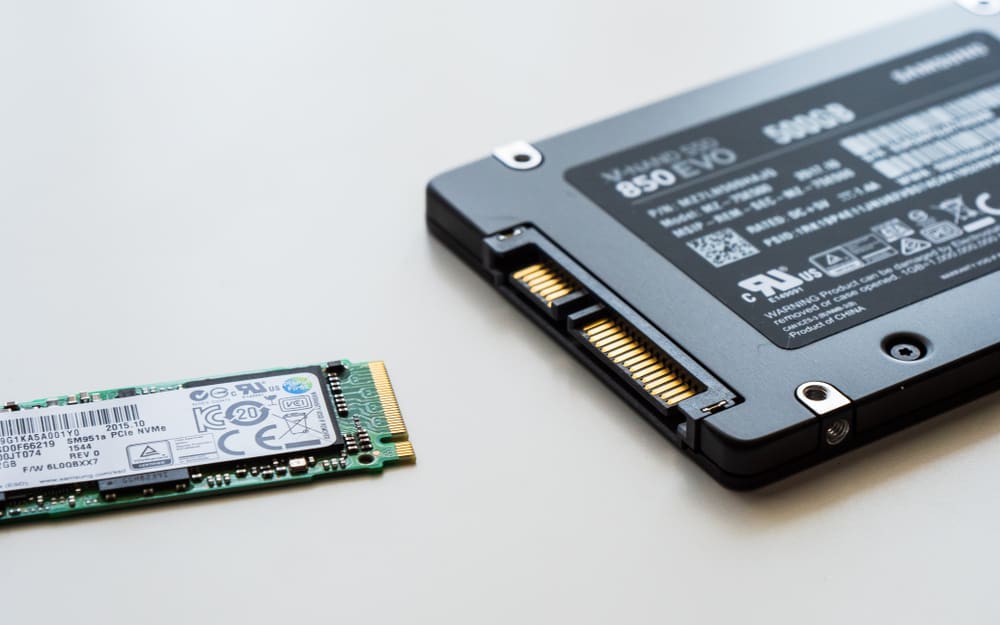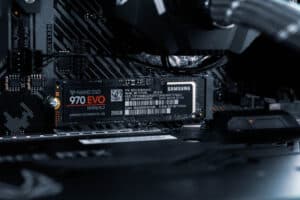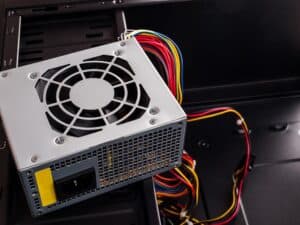
With a compact body and a fast speed, SSDs have many advantages over the more traditional HDDs. But surprising as it may sound, SSDs consume more power when active compared to HDDs. But exactly how much power do SSDs consume?
The power consumption of an SSD depends upon its type. For SATA and NVME SSDs, the power consumption lies at 0.2-3 watts when idle, 2-8 watts when reading data, and 3-10 watts when writing data.
On the other hand, the PCLe SSD consumes 2-6 watts when idle, 3-7 watts when reading data, and 5-15 watts when writing data.
In this article, I’ll list the power consumption of different SSDs, compare the power consumption of SSDs and HDDs, and explain how you can calculate the power consumption of your SSD.
Gauging Power Consumptions of Different SSDs
Before I delve into the details of the watts of power used by different SSDs, it’s worthwhile to note that I’ll be stating the SSDs’ power consumption in ranges. The lower bound represents the minimum number of watts used; the upper bound represents the maximum number of watts used by the SSD.
I’ve collected the data for SSDs in three states: Idle, Read, and Write. “Idle” is when the SSD is processing no data. Whereas “Read” and “Write” are when it is reading and writing data on the disk, respectively. Also, the data may vary for different SSD brands.
2.5-Inch SATA SSD
The 2.5-inch SATA SSD has a power consumption range of 0.25-2 watts when idle. When it’s reading, it consumes data at an expensive 4-8 watts. Not further from that, it consumes 5 8 watts of data when writing.
MSATA SSD
MSATA SSDs do reasonably well on power consumption. When idle, their power consumption can vary between a nice and narrow range of 0.21-1.20 watts. While reading data, they consume a reasonable power of 2-5 watts.
This power conservation disappears when it comes to writing data. While writing data, they consume power in a range of 5-8 watts.
M.2 SATA SSD
M.2 SATA SSD has a modest power consumption range of 0.30-2 watts when idle. When reading data, they consume 2-6 watts. Whereas they consume 3-9 watts when writing data. Overall, they have got a reasonable power consumption range.
M.2 NVME SSD
M.2 NVME SSDs fare just a jot higher than M.2 SATA SSDs per power consumption. They consume a fair 0.50-3 watts when idle. When reading and writing data, they consume 2-8 watts and 3-10 watts, respectively.
PCIe SSD
PCle SSDs consume the most sizeable number of watts when compared to SATA and NVME SSDs. They consume a boisterous 2-6 watts when idle, 3-7 watts when reading data, and 5-15 watts when writing data.
Power Consumptions [SSD vs. HDD]
Having heard a lot about SSDs’ swiftness, it may be a surprise that electronic SSDs consume more power than mechanical HDDs when reading and writing data. It is because of the large number of circuits incorporated in the SSD that the HDD lacks.
But this doesn’t put SSDs at a disadvantage regarding power consumption. On the contrary, when SSDs are idle – which they’re most of the time – they consume far less power than an idle HDD. Ultimately, this makes power conservative as compared to HDDs.
How To Calculate Your SSD’s Power Consumption
If you want the exact of your SSD’s power consumption, you can look up your SSD’s spec sheet which comes with it. If you couldn’t find your SSD’s actual power consumption, you can still calculate it.
Find out the current and voltage of your SSD on the spec sheet, then multiply them together. The number you get is the SSD’s power.
Is Higher Power Consumption Bad for SSDs?
If your SSD has a larger-than-average power consumption, there’s nothing to worry about. It won’t affect your SSD’s performance at all. It will only reduce the battery’s lifetime by a small amount, which isn’t significant at all.
Moreover, the higher power consumption won’t lead to a significant increase in temperature or a decrease in speed.
Conclusion
Different SSDs consume a variable number of watts depending upon their type and condition. For SATA, MSATA, M.2 SATA SSD, and M.2 NVME SSD, the power consumption ranges between 0.2-3 watts when idle, 2-8 watts when reading data, and 3-10 watts when writing data. In contrast, the PCle SSD consumes 2-6 watts when idle, 3-7 watts when reading data, and 5-15 watts when writing data.








